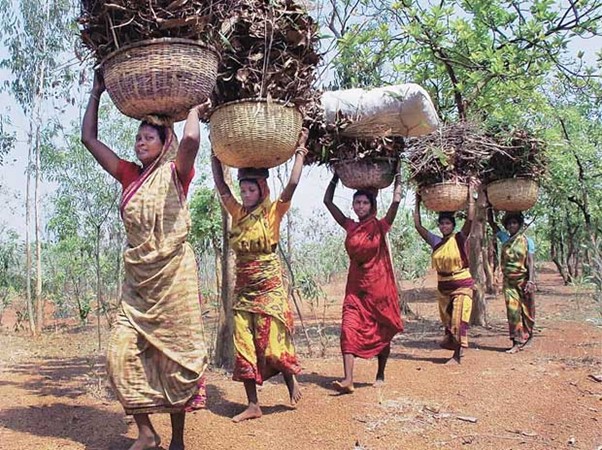UNDERSTANDING THE LEGAL AND SOCIAL STANDING
Campaign for Human Dignity and Survival a national forum sent a letter to the Ministry of Environment, Forests and Climate Change (MOEFCC) for tribal communities and forest dwellers about the issue that the amendments immediately revoke the rights of tribes and forest dwellers over forest resources which were notified of the Forest Conservation Rules (FCR), 2022, via MOEFCC order dated June 29, 2022. The Forest Rights Act (FRA), 2009, and its modifications in 2004, 2014, and 2017 were repealed by the notification. This stirred a spark in the debate among environmental activists about the clash of tribal rights and environment conservation by weighing in one factor as more pertinent as compared to the other thus giving reliance more on environment conservation.
Ecosystems around the world have been maintained by tribal groups. Through sustainable fishing, farming, and coexistence with wildlife, Indian tribes have contributed to the preservation of natural environments and the promotion of conservation for many years. A sense of responsibility to future generations is central to a tribal existence. Purposeful extraction without depletion is the basis of tribal existence. As primary holders of indigenous knowledge, tribal groups should benefit most from ecological conservation. A sustainable way of life allows them to preserve and maintain the environment incredibly well.

The Forest (Conservation) Act of 1980 allows for the use of forest land for non-forest activities, and the Rules effectively lay out the procedure for obtaining prior consent from the Union Government. The Rules have enabled it to plant trees as compensation in States or Union Territories other than the one where the forest area is being diverted, de-reserved, or leased. Exemptions from the new regulations were also offered for projects requiring more than 1,000 hectares of land. The tribal population in India relies on the revenue-producing forest land for their subsistence and plays a significant role in the conservation of forest areas. The new rules permit private parties to plant crops on the property, which may result in monoculture production and reduce biodiversity. The Rules have also given State Governments or Union Territories the ability to compile land that has been designated for compensatory afforestation into a land bank.
INTERPLAY OF CONSERVATION AND TRIBAL RIGHTS
A vastly wealthy nation with a diverse population made up of a variety of ethnicities, India has a diverse population. Indian ethnic groups have been essential in preserving the biodiversity of several virgin forests and have protected a variety of flora and fauna in tribal sacred groves. Without their efforts, these species may have vanished from the natural ecosystem. For instance, in the Boalcherra community, lack of cohesiveness was the biggest obstacle to ending jhum farming. The procedure was started to encourage group decision-making to stop the harmful impacts of jhum farming, which was destroying the environment and soil and causing soil erosion.

Jhum farming has been practiced in Northeast India for centuries because of long-held cultural beliefs, despite the disastrous effects it has had on the environment and ecology. In the Jhum cycles, the land regained its fertility over a longer period of time (10–15 years). Because of increased population pressure, however, deforestation on land has shortened its cycles from 4 to 7 years, resulting in a loss of fertility. As a result, the output from this kind of farming has also fallen more drastically.
Since maintaining their ecosystems is essential to their survival, tribal peoples are the best at maintaining them. Conservation efforts, which are governed by the establishment of protected areas and patrolled by anti-poaching squads, evict and abuse many individuals, particularly indigenous peoples. However, those efforts fail to halt the escalating environmental catastrophe. A network of tiger reserves in India has forced millions of tribal people out or abused them. Forests are difficult to manage and protect due to their limited ability to care for them. Tribal peoples are paying the price for a conservation strategy that is blatantly ineffective. The conservation sector continues to fund initiatives that exploit and alienate native peoples. It is causing a sizable population to view environmentalists as adversaries.
Additionally, the FRA ensured that biodiversity, sensitive ecological zones, animals and their habitats, as well as the history of forest communities, were preserved before any development could begin. The government violates the spirit of the FRA by eliminating the measures, especially certain early requirements. In accordance with Section 5 of the FRA, Gram Sabhas can stop any activities that threaten forests, biodiversity, wildlife, and eco-sensitive zones. Taking on corporations may prove challenging for Gram Sabhas since they lack power in practice. The government has expanded parks, increased evictions, and worked to increase tourism instead of recognizing native peoples’ rights to their land.

CONCLUSION
An effective system of checks and balances is needed. The Forest Department has sole control over forests and wildlife under the current arrangement, so it is necessary even under that system. A transparent and immaculate approach is the only way to ensure that any sector won’t misuse its authority and achieving such a feat under these laws is implausible with no instruments to ensure regulatory measures. Private-sector investment in plantations has been frequently encouraged and subsidized by the public sector. Various governments are currently transferring plantation tenure and access rights to private companies, but the practice is becoming more widespread.
Through a process of decentralizing governance, indigenous groups’ rights to their lands and forests are being restored globally as an essential component of conservation programmes. However, there has been an upfront absolute refusal to recognize such allegations in India up until lately. It is important to encourage tribal to share their knowledge of conservation techniques and indigenous practices with scholars, decision-makers, and conservationists. The protection of the environment would not be complete without the involvement of tribal societies which had been the watchdog of the Indian vegetation and forests for centuries.
Written by Aathira Pillai
Edited by Yashvi Vasani




